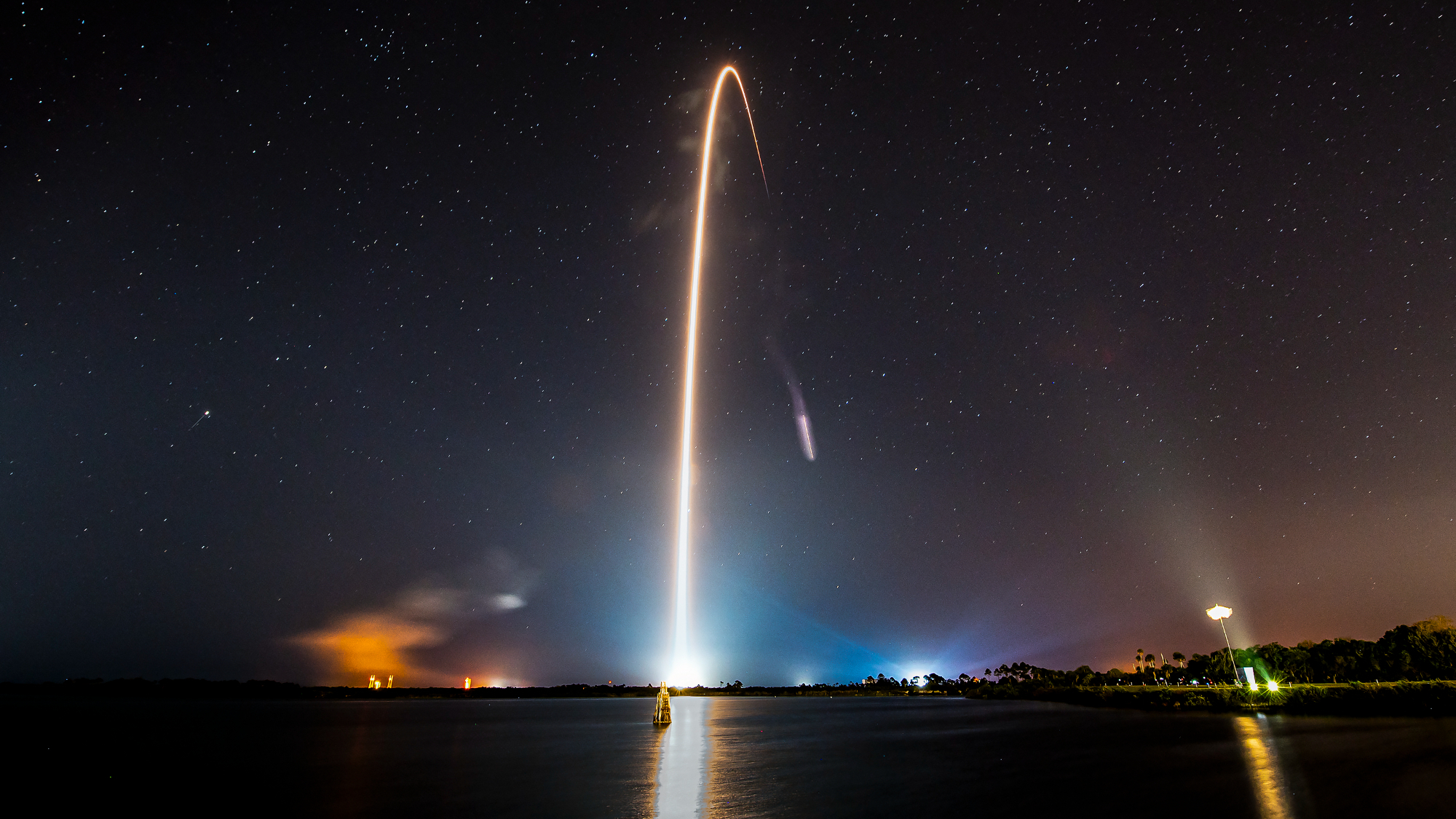On a busy Saturday evening (March 30), SpaceX launched two rockets five hours apart from Florida.
The operation began at 5:52 p.m. EDT (2152 GMT) Saturday, when a Falcon 9 rocket launched the Eutelsat 36D communications satellite into the sky from NASA's Kennedy Space Center (KSC).
Later, at 9:30 p.m. EDT (0130 GMT Sunday, March 31), another Falcon 9 lifted off 23 SpaceX's Starlink broadband satellites from the Cape Canaveral Space Force Station next to KSC.
There should also be a third launch on Saturday night — another Starlink mission, from Vandenberg Space Force Base in California, during a four-hour window that opened at 10:30 p.m. EDT (7:30 p.m.). evening California time; 0230 GMT on March 31). But SpaceX aborted that third mission due to bad weather.
Related: Starlink satellite train: How to see and track it in the night sky
Both Falcon 9 first stages launched on Saturday returned to Earth on schedule, landing on SpaceX droneships in the ocean 8.5 minutes after liftoff. It was the 12th liftoff and landing for the Eutelsat 36D Falcon 9 and the 18th for the Starlink booster.
Eutelsat 36D was placed into geostationary transfer orbit 34 minutes after launch. Once operational, the satellite will provide TV broadcast services to customers in Europe, Russia and Africa. According to EverydayAstronaut.com.
23 Starlink satellites were placed into low Earth orbit as planned More than 5,600 of their active broadband brethren Up there.

SpaceX has already experienced several launch days. For example, last month, the company launched a cluster of Starlink satellites, the classified USSF-124 mission for the US Space Force, and the IM-1 private moon landing mission within 24 hours.
Saturday evening's liftoffs were SpaceX's 30th and 31st orbital launches of the year. The company plans to conduct 144 orbital missions this year, SpaceX representatives said.

“Friend of animals everywhere. Devoted analyst. Total alcohol scholar. Infuriatingly humble food trailblazer.”